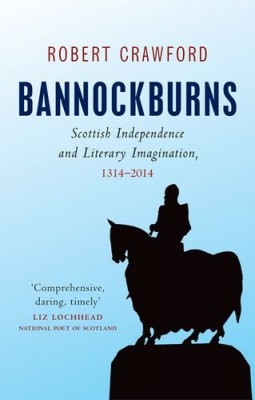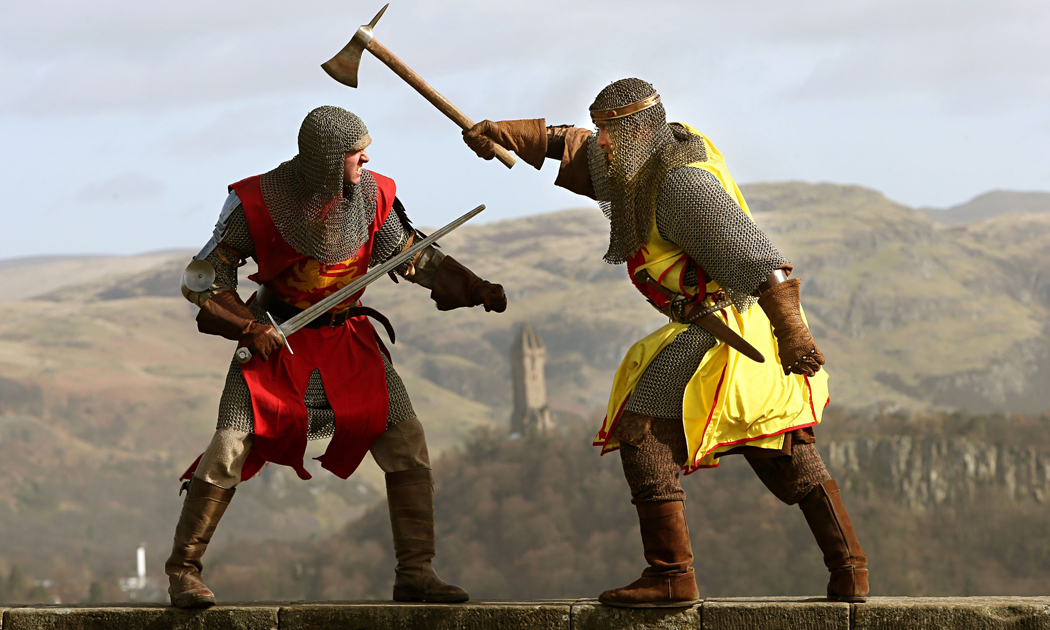The Battle of Bannockburn in 1314 was the most significant Scottish victory in the War of Scottish Independence and by many hailed as the culmination of the forging of an independent Scottish Nation
The Battle of Bannockburn on the 24 and 25th of June 1314 was a significant Scottish victory in the First War of Scottish Independence, and is considered a landmark in Scottish history.
The immediate background was that Stirling Castle, a Scots royal fortress but occupied by the English, was under siege by the Scottish army. Edward II of England assembled a formidable force of perhaps 17.000 men (cavalry and foot soldiers) to relieve it. This attempt failed, and his army was defeated in a pitched battle by a smaller army of perhaps 10.000 men, commanded by Robert I of Scotland. The battle went on for two days, but ended in a complete rout fro the English. King Edward had to flee and the rest of his army was hacked on its way back across the border.
At first, when Alex Salmond aired the plans for a referendum about Scottish independence in 2014, he had his eyes set on a date in June. Obviously his plan was to connect two events: the 700 year anniversary of the Battle of Bannockburn on the 24th of June and the highly emotional fight for independence, he must have envisaged from the beginning would be part of the campaign leading up to the polls.
Savvy as always, Salmond soon understood that the date would be toxic for different reasons. One was that people would be on a holiday and thus not really interested in voting. Another was fear of getting mired in a debate fuelled by centuries-old grievances and romantic myths. The only possible way of gaining independence in 2014 was of course to claim that future Scotland would be an all-embracing country, open to all regardless of ethnicity and including the English. Which is exactly the strategy, which Salmond and his team did pursue.

In the end, of course, he could not restrain himself. “Bannockburn is the birthplace of Scotland”, he claimed in a speech faithfully presented in “The Scotsman” as an editorial article on the 30th of June. A speech he apparently gave at the celebrations a couple of days before. However, this was in fact quite untrue. It took more than 6 years to see the daylight of the treaty of… and the civil way continued for more than 15 years. In yet another comment published on the website of the Scottish Government, the First Minister claimed that “with tickets sold out and members of the public traveling from far and wide to be part of this massive commemoration, the rightful place which the battlefield holds in our nation’s history was properly recognised and celebrated”. Apparently his team forgot to tell him that the festivities in Bannockburn actually failed to sell less than a third of the planned tickets!
As will be remembered a full re-enactment of the battle with more than 200 participants from ten countries was staged during the anniversary, where Scotland’s Robert the Bruce overcame a significant military disadvantage and secured a victory after 48 hours of gruelling fight in the shadow of Stirling Castle.
If you missed the event there is ample opportunity to get a sense of what went on in the visitor centre, which recently opened on site and which has been received with high acclamation.
Wish to read more about Scotland the Brand and its medieval icons? Please follow the links below
Names, Sprigs, Feathers, Tartans and Kilts
SEE MORE:
The Battle of Bannockburn
Visitor Centre
Glasgow Road, Whins Of Milton, Stirling, Stirlingshire, FK7 0LJ
READ ALSO:
Robert the Bruce
A letter from Robert the Bruce from 1310 was recently found in the British Library. It reveals an extremely cautious Robert the bruce, who nevertheless asserts himself as a king among equals
READ MORE:
 Robert Bruce And the Community of the Realm of Scotland
Robert Bruce And the Community of the Realm of Scotland
By G. W. S. Barrow
Edinburgh University Press; 4th Revised edition edition. 2005
ISBN-10: 0748620222
ISBN-13: 978-0748620227
Robert Bruce: King of Scots
By Michael Penman
Yale University Press 2014
ISBN-10: 0300148720
ISBN-13: 978-0300148725
There is also a list of recent books presenting us with more or less scholarly investigations into the battle itself:
 Bannockburn. The Triumph of Robert the Bruce.
Bannockburn. The Triumph of Robert the Bruce.
By David Cornell
Yale University Press 2009
ISBN: 9780300207941
Bannockburn: Scotland’s Greatest Battle for Independence
By Angus Konstam
Aurum Press Ltd 2014
ISBN-10: 1781312877
ISBN-13: 978-1781312872
Bannockburn: The Battle for a Nation
by Alistair Moffat
Birlinn Ltd 2014
ISBN-10: 1780272189
ISBN-13: 978-1780272184
Bannockburns: Scottish Independence and the Literary Imagination, 1314-2014
By Robert Crawford
Edinburgh University Press 2014
ISBN-10: 0748685847
ISBN-13: 978-0748685844
